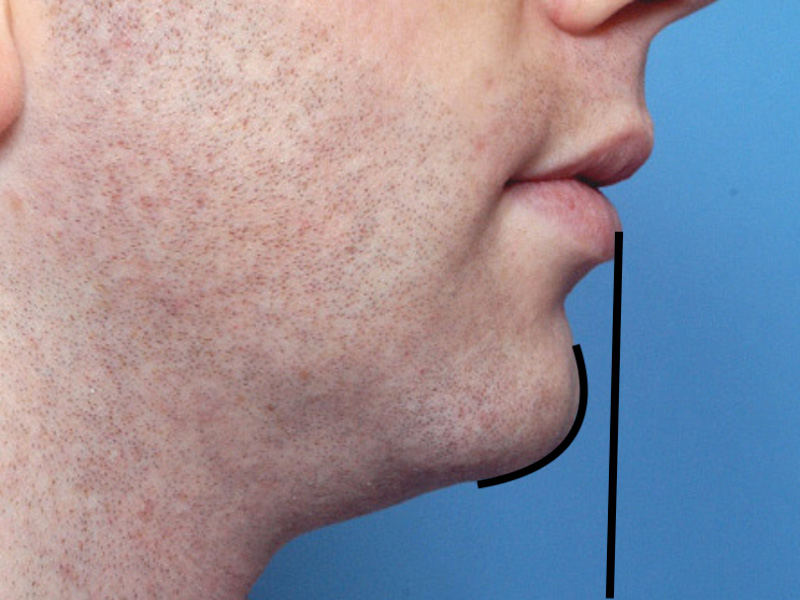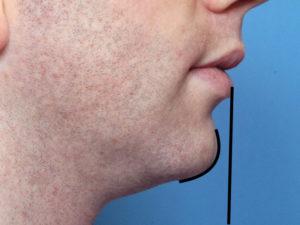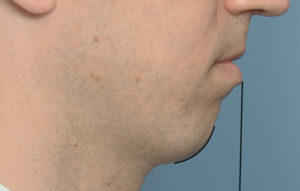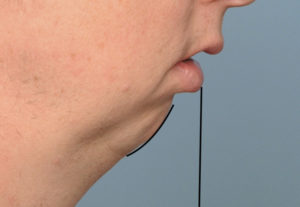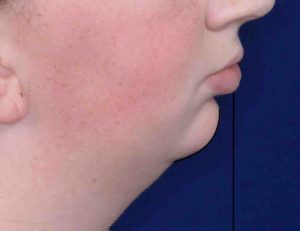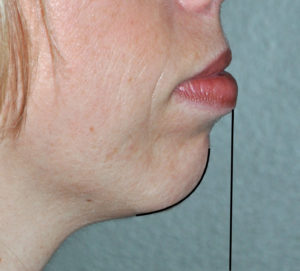Chin implants offer the simplest and most powerful method of facial reshaping per surgical time. Besides proper placement technique, the selection of the implant is the most important part of the alloplastic chin augmentation procedure. However, its long surgical history and the design evolution of the implant has led to many different shapes and sizes being commercially available which can be understandably confusing.
Because of the 3D structure of this lower facial projection intermingled with trying to make a specific chin implant have the desired aesthetic effect, a two step approach to choosing a chin implants helpful. This is particularly relevant for those surgeons with limited or no prior experience with this type of facial implant surgery. No surgeon can have every available chin implant option available (57 of them) for use in any patient’s surgery. Walking into surgery with just one or two implants options hold be the preoperative goal.
The two steps of preoperative chin implant selection are 1) SIZE of chin deficiency and 2) STYLE of chin implant.
STEP 1 Chin Shape Implant Sizing
Implants for chin deficiency first and foremost are chosen based on the size needed. While the amount of horizontal projection deficiency is but just one of the dimensions of the chin, it is the primary one that affects its appearance in most patients.The concepts of small, medium and large implant sizing, which is commonly used and always refers to a specific amount of horizontal projection that the implant provides, seems vague because it lacks a patient specific reference.
Since the chin is a projecting facial structure it is affected by the dimensions of projection, height and width. Ideally chin implant selection is based on matching what the patient’s dimensional needs are with what each specific implant style can accomplish which requires specific preoperative measurements. It also should be emphasized that computer imaging in any structural facial change is also of immense preoperative importance.

done based on its profile shape. The basic concept is that the more horizontally recessive the chin is the less convex the soft tissue chin pad becomes. The profile chin pad shape can be divided into three types, convex, curvilinear and flat which requires differing amounts of horizontal augmentation. Typically, convex chin shapes have small (1 to 3mms) horizontal needs, curvilinear chin shapes have medium (4 to 6 mms) horizontal needs and flat chin shapes have large (greater than 7mms) horizontal needs.
As a general rule remember that men typically prefer more significant changes than almost all females. Thus when in doubt go up a size in men and down a size in women.
The chin shape implant sizing method allows for a rapid assessment of the horizontal projection requirements, the most significant dimensional need for most potential chin augmentation patients. Specific millimeter selections within the three size categories is based on an assessment from the patient of their undesired size outcome fear. I always ask the patient before surgery which they would prefer if a perfect size outcome is not achieved. (too big or too small) While such a question is open to individual interpretation it does allow the surgeon to continue to have a patient-driven basis for the chosen chin implant size.

